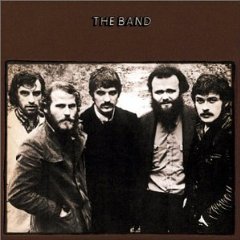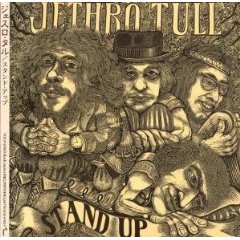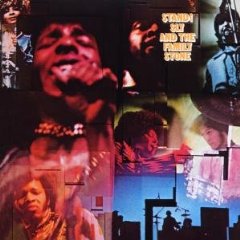The Best of ’60s Blues-Rock


The last time we had seen Joe Bonamassa was about five years ago in New London, Conn., at the Garde Arts Center with Sam Bush and his band playing in support of the young blues master. A lot has transpired since then.
Bonamassa can fill a much larger venue now because of his relentless touring of the States and Europe and issuing one, if not, two albums a year. His special blend of blues-oriented rock also routinely jumps to the top of the Blues charts on release and deservedly so.
Bonamassa was in Springfield, Mass., Tuesday at Symphony Hall, a concert hall evidently not built for rock, but was suitable nonetheless as the sound was outstanding during the two-hour-plus show with only Bonamassa and his band of bassist Carmen Rojas, keyboardist Rick Melick and drummer Tal Bergman playing, no opening act. Continue reading Joe Bonamassa at Symphony Hall

In early August, 1969, there was quite a buzz about Woodstock. I don’t believe anyone, even at that late date, anticipated how big it was going to be. At least not among my friends.
Most of us were not planning on a trip to upstate New York though. On Sunday the 17th during the festival weekend, a concert was scheduled at the original Oakdale Music Theatre, with its theatre-in-the-round stage, in Wallingford, Conn., that was not to be missed, Led Zeppelin.
We’d seen Cream there the previous summer and myriad other mid-to-late ’60s acts: The Paul Butterfield Blues Band, Lovin’ Spoonful, Ray Charles. Shows I didn’t get to see included The Who, The Doors and Chicago. One of my bands, The Bram Rigg Set opened for The Dave Clark Five in late summer, 1967. It was an almost-perfect venue to get an up-close look at performers. Seating was perhaps no more than about 2,000, the closest within about 15 to 20 feet of the musicians, sometimes even closer when they came to the edge of stage, which was only a few feet off the ground.
Zeppelin’s first album was released in early 1969 and it made quite an impact. Surprising really. Jimmy Page was well known and I’d seen him with the last version of The Yardbirds in 1967 at the Village Theater in New York. But Robert Plant, John Paul Jones, John Bonham, where did they come from? Continue reading Concerts Vol. 14: Led Zeppelin
Three varied but commendable releases have graced my CD player and iPod of late from four, what you might call, elder statesman of the music world.
 The first, Robert Plant’s Band Of Joy, a follow-up to the hugely successful Raising Sand of three years ago with Alison Krause. This is not a sequel, as that broke down almost before it started, but it shares a lot in common with Raising Sand.
The first, Robert Plant’s Band Of Joy, a follow-up to the hugely successful Raising Sand of three years ago with Alison Krause. This is not a sequel, as that broke down almost before it started, but it shares a lot in common with Raising Sand.
The title is the name of a band Plant played in before Led Zeppelin, but the music bares little resemblance to that never recorded blues-psychedelia mashup and even less to Zeppelin. Plant continues his journey through Americana-based country, bluegrass, blues and Rock ‘n Roll with a small, tight ensemble, featuring Buddy Miller on a variety of stringed instruments and as band leader and co-producer with Plant, and backing vocals from Patty Griffin.
These are mostly covers, but impeccably selected beginning with the opener Angel Dance from Los Lobos that rings with glistening mandolin and acoustic and electric guitars under Plant’s effective low-key delivery, at least low-key in comparison with what he is most noted for as the quintessential rock frontman. The track in underpinned by a churning, almost dirge-like marching rhythm.
The production on most of the album has a heavy sounding bottom that gives each track a dark, menacing drive, but each song also has adeptly placed ornamentation, including mandoguitar, baritone 6-string bass, octave mandolin, banjo and pedal and lap steel that lifts the overall sound up and all of which lends an Appalachian quality to the proceedings.
There is only one original co-written by Plant and Miller, Central Two-O-Nine, and the team arranges two traditionals, Satan Your Kingdom Must Come Down and Cindy, I’ll Marry You Someday, both imaginative versions meticulously executed. But Plant loves good songwriters and has an excellent ear for them. Continue reading Three quick ones: Plant, Thompson and The Union
Them Crooked Vultures is a very heavy band. Not heavy as in heavy metal, heavy as in heavy hard rock.
 Featuring three hard rock virtuosos in Led Zeppelin bassist John Paul Jones, Dave Grohl, from Foo Fighters, who switches from guitar back to drums, his spot in Nirvana, and Josh Homme of Queens Of The Stone Age on guitar and lead vocals, the group exhibits a competency and energy rarely found in the genre today.
Featuring three hard rock virtuosos in Led Zeppelin bassist John Paul Jones, Dave Grohl, from Foo Fighters, who switches from guitar back to drums, his spot in Nirvana, and Josh Homme of Queens Of The Stone Age on guitar and lead vocals, the group exhibits a competency and energy rarely found in the genre today.
Their self-titled debut album consists of songs that are virtually all guitar riff driven over a furious and powerful rhythm section, adorned with dark, devilish, often impenetrable (sometimes penetrable) lyrics. With titles such as No One Loves Me & Neither Do I, Dead End Friends, Reptiles, Warsaw Or The First Breath You Take After You Give Up and Caligulove, it’s hard to imagine anything else.
The grinding, churning rhythm section not only shows how adept Grohl is back on the drums, but also gives a strong indication of Jones’ contribution to Zeppelin, which was often lost or overlooked during that band’s heyday.
Homme is fully capable of handling the vocal and lead guitar duties, although they did add a second guitarist, Alain Johannes, on their recent Saturday Night Live appearance, during which they played Mind Eraser, No Chaser, a tune that might be termed their most accessible or commercial to crossover audiences, although nothing on the album really falls entirely in that vein, and New Fang, the group’s first single, with its complicated guitar rhythm over which Homme sings a completely different melodic structure, something always to take note of.
The group hits a three-song streak in the middle of their the album that is really quite brilliant in Elephants, Scumbag Blues and Bandoliers. In fact, by the fifth track, Elephants, the listener starts to realize how much Homme can sound like Jim Morrison. And this likens the overall sound of the band to The Doors as a power trio, minus Ray Manzarek’s keyboards. Continue reading Vulture sighting
Jack White’s latest group The Dead Weather reaches highs that equal the best of two of his other projects, The White Stripes and The Raconteurs. Still, despite excellent musicianship, effective vocals and intriguing lyrics, the group falls a little short overall of sustaining those highs throughout its debut, Horehound, particularly in comparison with The Raconteurs’ two records.
 An interesting hard-edged, lyrically dark album, Horehound combines elements of Zeppelin-inspired hard rock with modern takes on alternative and blues themes. The group is at its best when Alison Mosshart, of The Kills, takes lead vocal duties as she does on nine of the 11 tracks.
An interesting hard-edged, lyrically dark album, Horehound combines elements of Zeppelin-inspired hard rock with modern takes on alternative and blues themes. The group is at its best when Alison Mosshart, of The Kills, takes lead vocal duties as she does on nine of the 11 tracks.
Her voice is perfectly suited for the band’s style, sometimes evoking a female Robert Plant at others sounding reminiscent of Concrete Blonde’s Johnette Napolitano or for moments even a trace of P.J. Harvey. Comparisons aside, she retains a singular quality that only reminds one of those artists. Her performance here shows her off as one of modern rock’s best singers and front-women.
Things work best on the first two tracks, 60 Feet Tall and Hang You From The Heavens, both written by Mosshart and guitarist Dean Fertita of Queens Of The Stone Age. For this assemblage White plays drums on all but one track and The Raconteurs Jack Lawrence joins in on bass. Continue reading White’s Weather experiment
When I think of 1969, I think the end of the hippie dream, the fading of peace and love. After the violence of the Democratic convention in ’68, it appeared the Yippies were taking precedence over the original anti-war movement that so many of us bought into when we were at college.
 Despite the triumph of Woodstock, the year ended on the foreboding trajedy of Altamont. It was the year the Beatles said farewell, another dream that was ending. So when I think about 1969, I don’t necessarily think of great albums first. But as Mojo Magazine points out in a recent special edition with a piece aptly titled 69 from 1969, which we acknowledge with the headline above, there was a motherlode of great music released in 1969. The music was changing and the early ’70s gave us another wave of great music as well with the dawn of the singer-songwriter era. But the decade’s last year included an impressive list of offerings.
Despite the triumph of Woodstock, the year ended on the foreboding trajedy of Altamont. It was the year the Beatles said farewell, another dream that was ending. So when I think about 1969, I don’t necessarily think of great albums first. But as Mojo Magazine points out in a recent special edition with a piece aptly titled 69 from 1969, which we acknowledge with the headline above, there was a motherlode of great music released in 1969. The music was changing and the early ’70s gave us another wave of great music as well with the dawn of the singer-songwriter era. But the decade’s last year included an impressive list of offerings.
You can find music just as good or better from any year in the ’60s. But since it’s 40 years on for this watershed year, we have a poll below in which you can vote. To refresh your memory, here are some of the highlights in no particular order:
 The Band, The Band: Their second release and perhaps my favorite, along with Stage Fright, filled with songs that make up one of the foundations of today’s Americana movement.
The Band, The Band: Their second release and perhaps my favorite, along with Stage Fright, filled with songs that make up one of the foundations of today’s Americana movement.
Everybody Knows This Is Nowhere, Neil Young: His second, and although I for one liked the weak-selling debut, this unquestionably has several of his standards.
Led Zeppelin I, Led Zeppelin: Some prefer the second, released in late 1969, but this really had the bigger impact as far as influencing the music scene. It was hard rock, but quite different in some ways than anything before.
Stand Up, Jethro Tull: Arguably their best, predating the more progressive leanings of the band.
 A Salty Dog, Procol Harum: Speaking of prog, but really is it? Using classical ideas and instrumentation in a tasteful combination is more like it.
A Salty Dog, Procol Harum: Speaking of prog, but really is it? Using classical ideas and instrumentation in a tasteful combination is more like it.
The Gilded Palace Of Sin, The Flying Burrito Brothers: Gene Clark, the Byrds and others had recorded tracks and some nearly full albums of what was to be called country rock, but Gram Parsons’ first project as a leader really set the stage for the Eagles and those who followed.
Tommy, the Who: Many cite other Who albums as superior to this and that’s probably true, but none had a bigger influence in the grand scheme of things.
Stand, Sly & the Family Stone: This is loaded with classic Sly songs, Everyday People, I Want To Take You Higher, Sing A Simple Song, You Can Make It If You Try.
Crosby, Stills & Nash, Crosby, Stills & Nash: Deja Vu had some better songs on it, but as a trio this was their highlight.
Dusty In Memphis, Dusty Springfield: A peak from a remarkably consistent vocalist, career defining.
Blind Faith, Blind Faith: The one-off, with about 15 minutes of filler, still holds up as a solid outing with at least a couple of rock ‘n roll classics.
Abbey Road, the Beatles: A fitting sendoff, which was recorded after but released before their official swan song, Let It Be.
In A Silent Way, Miles Davis: I preferred the first real experiment into fusion, Miles In The Sky (1967), but there is no doubting the impact of this outing.
Clouds, Joni Mitchell: I always think of this as coming out earlier than 1969, but her career didn’t take off in earnest as a solo performer until the ’70s with Blue and For The Roses.
Then Play On, Fleetwood Mac: The last gasp of the original Mac with Peter Green. It may have been the last but it has some wonderful blues romps, including Oh Well.
Let It Bleed, the Rolling Stones: Their decided shift back to blues-influenced rock on Beggar’s Banquet is followed by incorporating country blues into the mix. One of their last great ones.
There are many others, the Allman Brothers’ debut; Fairport Convention’s Liege & Lief, not as well known in the States as the U.K., where it is a folk-rock staple; Santana’s and Chicago’s first. The list goes on.
What do you think? Vote for the best album of 1969.
This article is also available over at BabyBoom Review at this link.